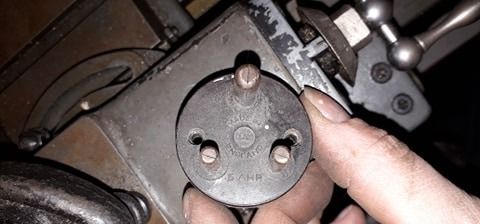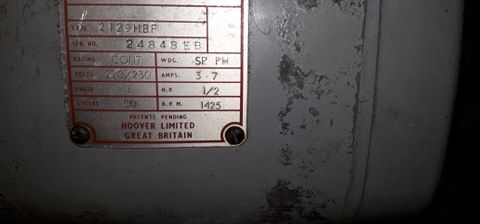Well, firstly there ain't no way a 5 amp BS1362 fuse is going to let enough energy through to start a single phase 1/5 HP (Edit correction 1/2 hp) motor. Not nohow.
13A fuse is going to be perfectly safe, provided:
Motor and wiring are adequate for 20A continuous current ('cos it takes at least 20A or thereabouts to blow a 13 amp fuse)
Earthing is good (I typed god, maybe that's a better sentiment!)
Motor and switchgear insulation is adequate.
Single phase motors take something in the region of 8 times full load current (more if they can get it) briefly while starting. The fuse has got to let enough energy through to get over this hump, after the motor is up to speed the line current falls back to something akin to what's on the rating plate, but you also need to take into account power factor (lousy). The other hazard is that running a brief transient load of about 30 amps through the house wiring and a typical 13 amp socket limits the available current because of the upstream wiring resistance, contact resistance in the socket outlet, and the resistance of those horrible bent metal pegs connecting to the fuse in the plug top.
I don't have the I squared T diagrams in the IEE Wiring reg's to hand – they're at work and I'm at home. These dictate the rights and wrongs of the fuse characteristics for this application. A 1/2HP motor should have a thermal overload device protecting it, if there is a working internal thermal trip so well and good, otherwise you need a contactor/overload arrangement as well as the 13 amp socket on the wall. A 13 amp fuse will do just fine, but don't be too surprised if it blows on repeated quick motor starts.
In short a 13 amp fuse will be perfectly OK provided the wiring is made with 1.5 mm2 or better 2.5 mm2 cable, But do please get someone with a proper calibrated insulation tester (NOT a multimeter) to check insulation at 500 V DC and earth path resistance for safety reasons.
HTH Simon
PS Waste of time my offering to do the safety checks at the moment – I'd gladly do so if you are local (West Gloucestershire) but not just at the moment.
Edited By Simon Williams 3 on 24/03/2020 11:08:56
Martin of Wick.






